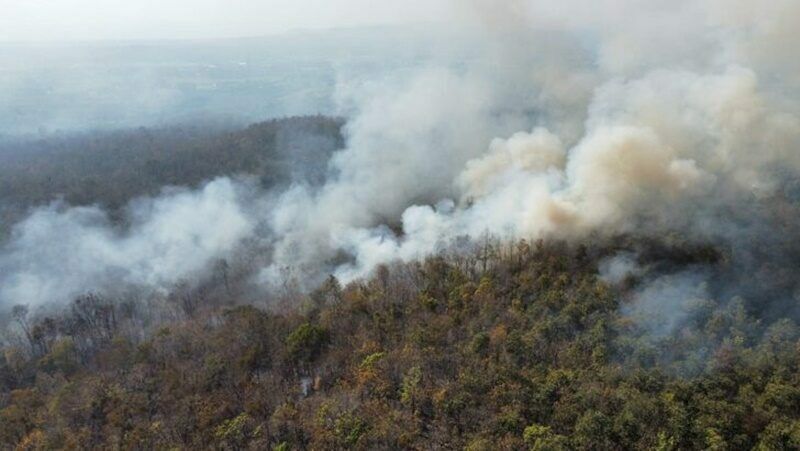Thailand’s fiery plight: 400+ hotspots spark concern

Thailand is currently grappling with more than 400 hotspots, with the highest concentration in the provinces of Chiang Mai, Lampang, and Mae Hong Son, each reporting over 40 incidents. In comparison, neighbouring countries are also facing significant challenges, with Myanmar recording 3,065 hotspots, Cambodia 1,341, Laos 704, and Vietnam 414 as of February 18.
The Geo-Informatics and Space Technology Development Agency (GISTDA), operating under the Ministry of Higher Education, Science, Research and Innovation, has been meticulously tracking these hotspots across Thailand.
On February 18, GISTDA reported that the majority of the 423 hotspots detected within Thailand were located in conservation forests (161 hotspots), national reserved forests (138 hotspots), agricultural areas (49 hotspots), Sor Por Kor lands—land reform areas designated for agriculture (46 hotspots)—with the remaining 25 found in communities and other areas, and four along highways.
Chiang Mai is currently the most affected province, with 46 hotspots, followed closely by Lampang and Mae Hong Son, each with 43 identified hotspots. These figures indicate a stark increase in hotspots, potentially exacerbating air quality issues and heightening the risk of wildfires, which can have devastating consequences for ecosystems, agriculture, and human health.
GISTDA continues to monitor the situation closely, providing updates to ensure that all relevant agencies have the information necessary to manage and address the ongoing situation effectively. For specific area details and further updates, the public and concerned authorities can visit GISTDA’s dedicated fire information portal at https://fire.gistda.or.th. Additionally, the public is advised to stay informed on the PM2.5 situation through the ‘Check Dust’ application.
In related news, the Administrative Court in Chiang Mai ordered Prime Minister Srettha Thavisin and the National Environment Board to develop an emergency plan within 90 days to combat persistent PM2.5 pollution. This landmark decision follows years of inaction, compelling the government to address the health crisis.
Additionally, in Bangkok, civic groups collaborated with the BMA to propose a work-from-home plan for 50,000 workers in response to escalating PM2.5 levels. Read more about PM2.5 emergency plan in Chiang Mai.
Latest Thailand News
Follow The Thaiger on Google News:


























